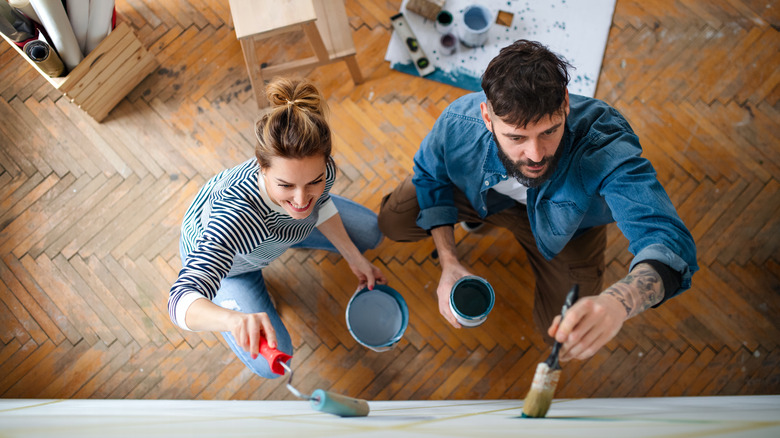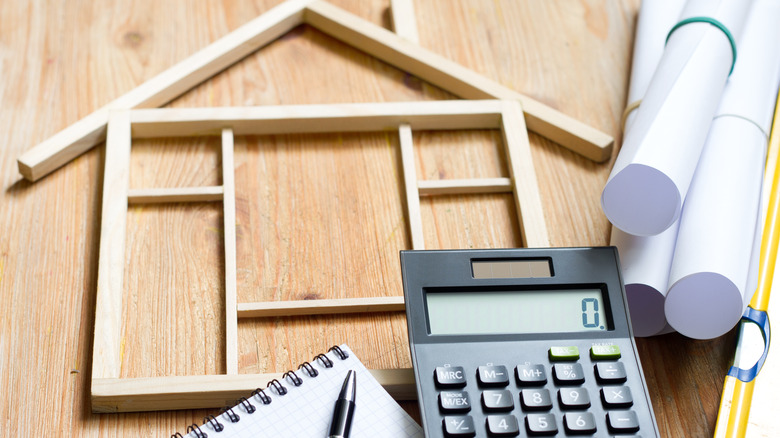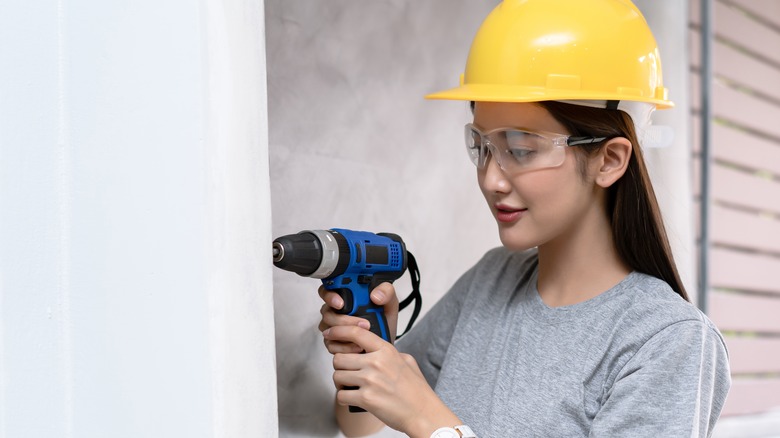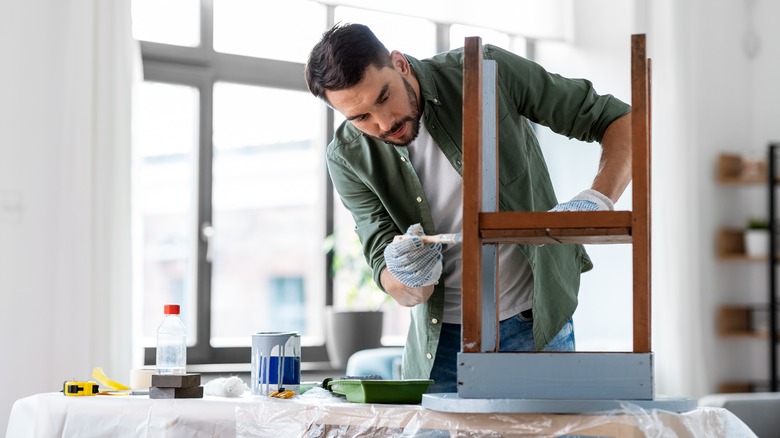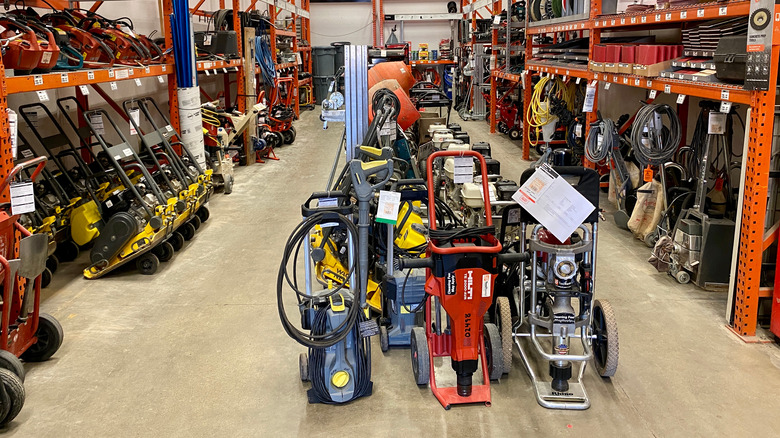Mistakes To Avoid As A New DIYer
If you are trying to save money on home improvements, tasks like painting the living room or updating the bathroom with a new vanity seem like simple enough projects — things you could do without having a lot of professional skills. Nerd Wallet states that since 2020, about three in five homeowners made the decision to attempt home improvement projects on their own, spending an average of $6,438.
There are some projects, such as those involving electrical work, that only a professional should do. Yet, with a bit of skill, patience, and the right tools, you may be able to do more of the repairs and updates around your home than you realize. If this sounds like the ideal way to stretch your budget, there are some very common mistakes that you want to avoid — otherwise, you could find yourself with bigger problems than you started with in the first place.
Trying to do too much
If you are new to home improvements, it is best to start with a smaller, easier project. One of the most common mistakes people make is trying to do too much at one time. Most DIYers will find themselves in this situation at some point, particularly if they take on a project with too many moving components, or just too much for one person to do on their own. While it is part of the excitement of doing the work yourself, it's easy to get carried away, which could cost you down the road.
Today's Homeowner suggests taking things one step at a time, and avoid large projects that require specific skills or knowledge you do not have yet. Tackle smaller projects first, build up some skills and experience, and then do more complicated jobs over time as your confidence improves. Doing some research to understand what goes into a particular project before taking it on is also important.
Running out of money
Plan and expect projects to go over budget. As House Method states, an estimated 50% of all home renovations will require more money than you initially thought. In many situations, this happens because homeowners want more than they can realistically afford. Other times, there's a need to spend more due to the rising cost of materials. In this instance, you may be tempted to purchase inferior materials because they are cheaper, only to find out you need to redo the project because they are, in fact, inadequate.
Projects are often difficult to budget for. For instance, while you may know you need to spend money on varnish for the hardwood floors you're redoing, you may not have thought about the cost of renting a sander to do the first step in the project. As you research your project and the steps you need to take to complete it, allow some extra funds if possible, just in case you encounter a problem or the cost increases unexpectedly.
Not working safely
As a DIYer, you need to take the same steps that every professional takes in ensuring that the work you do is safe. To do this, you need a combination of a safe environment, the right tools, and adequate personal protective equipment (PPE) to keep yourself safe throughout the project.
Popular Mechanics breaks down a list of must-have safety gear homeowners should not skip out on, including safety glasses designed to protect the eyes from particles. For those working with power tools, hearing protection is also essential — sound-protecting earmuffs help reduce the impact of super loud or constant noise. In situations where there's dust, or if you're working with fiberglass or mold, using masks and respirators at all times is essential. However, if there's a risk of asbestos, it's better to hire a professional to do the work for you since this is a high risk material you shouldn't disturb even with a mask, explains WebMD.
Too little time
The weekend warrior in you may want to replace the flooring in a bedroom on a Saturday so that on Sunday you can spend time installing shelving and setting up the space for use. Or, you may be planning to do a list of 10 projects before the family comes over in a few weeks. Trying to do too much in too little time is a big mistake that can lead to a number of problems.
21 Oak states homeowners need to plan enough time for projects based on what the work entails, but also to expect setbacks to occur as well. There's very little benefit in rushing to complete a project, or trying too hard to do too much, only to be unhappy with the results in the end. Instead, overestimate the amount of time you'll need to complete a project, so you have the necessary buffer.
Using the wrong tools
It is often necessary to purchase tools specific to the job you are working on, and those costs can quickly add up. Your DIY project may require very specific tools based on the materials you are using or the design you are trying to achieve. Today's Homeowner notes the importance of having the right tools for the job, stating it's essential to invest in what makes the project easier and safer to do — the wrong tools can actually ruin a project.
If you're unsure of what tools are required (such as the right grit in sandpaper or a specific drill bit,) do your research first. For larger tools that may be too expensive to purchase, consider turning to a home improvement store that rents them to save some money. Altenativly, you may be able to borrow a tool from a neighbor — and maybe get some help in the process!

